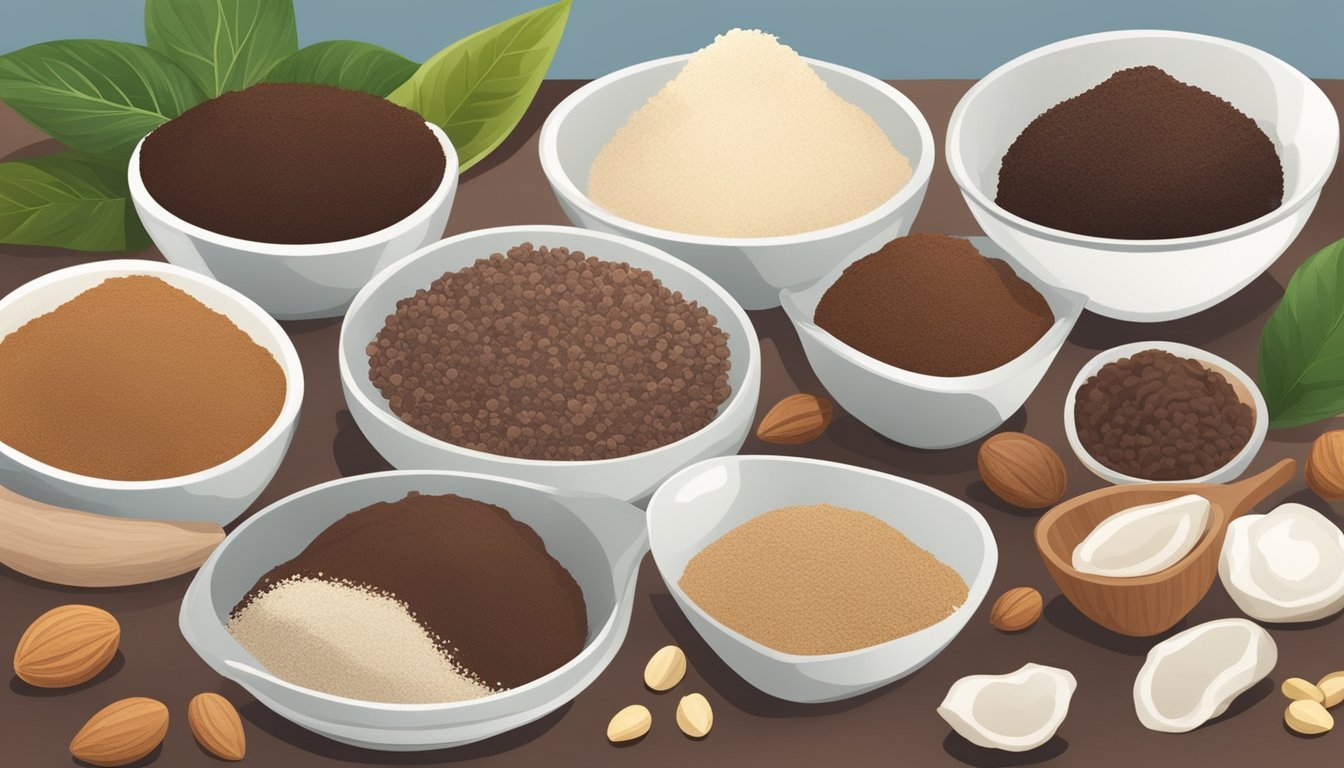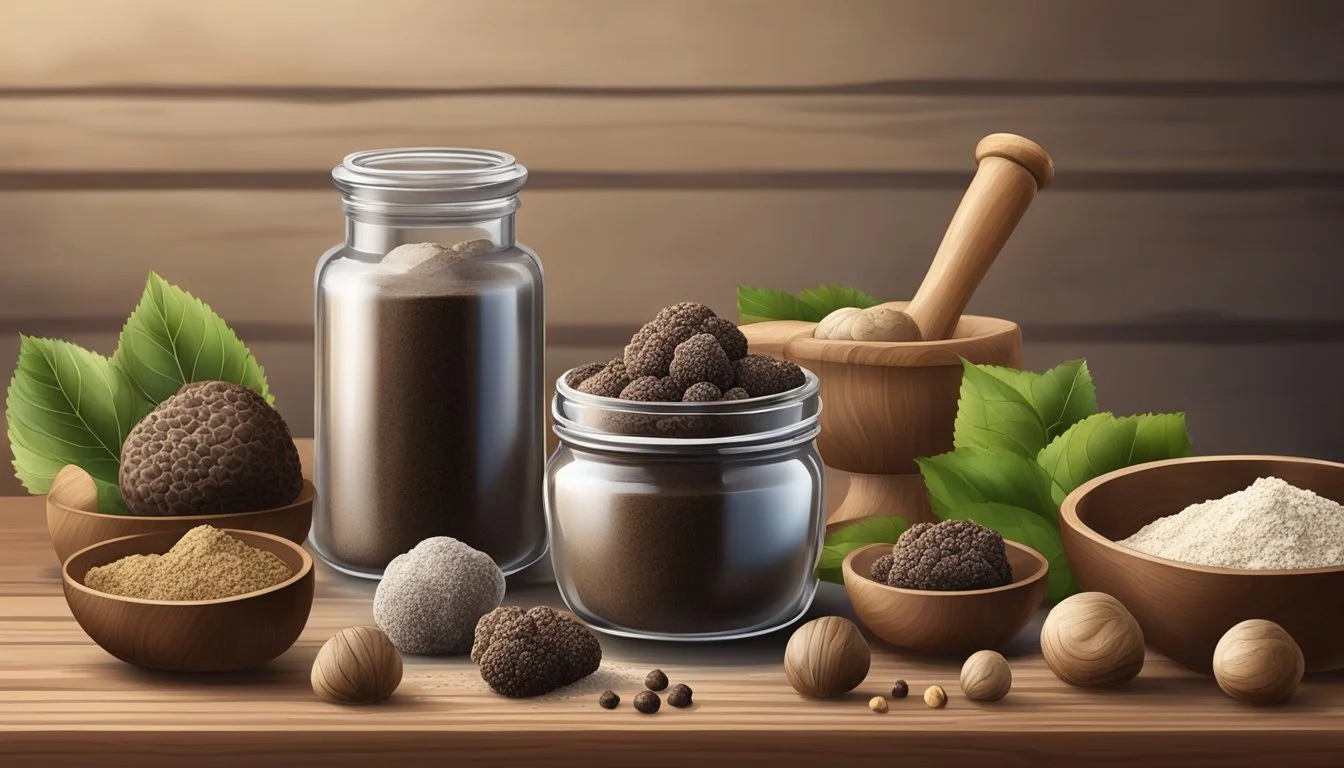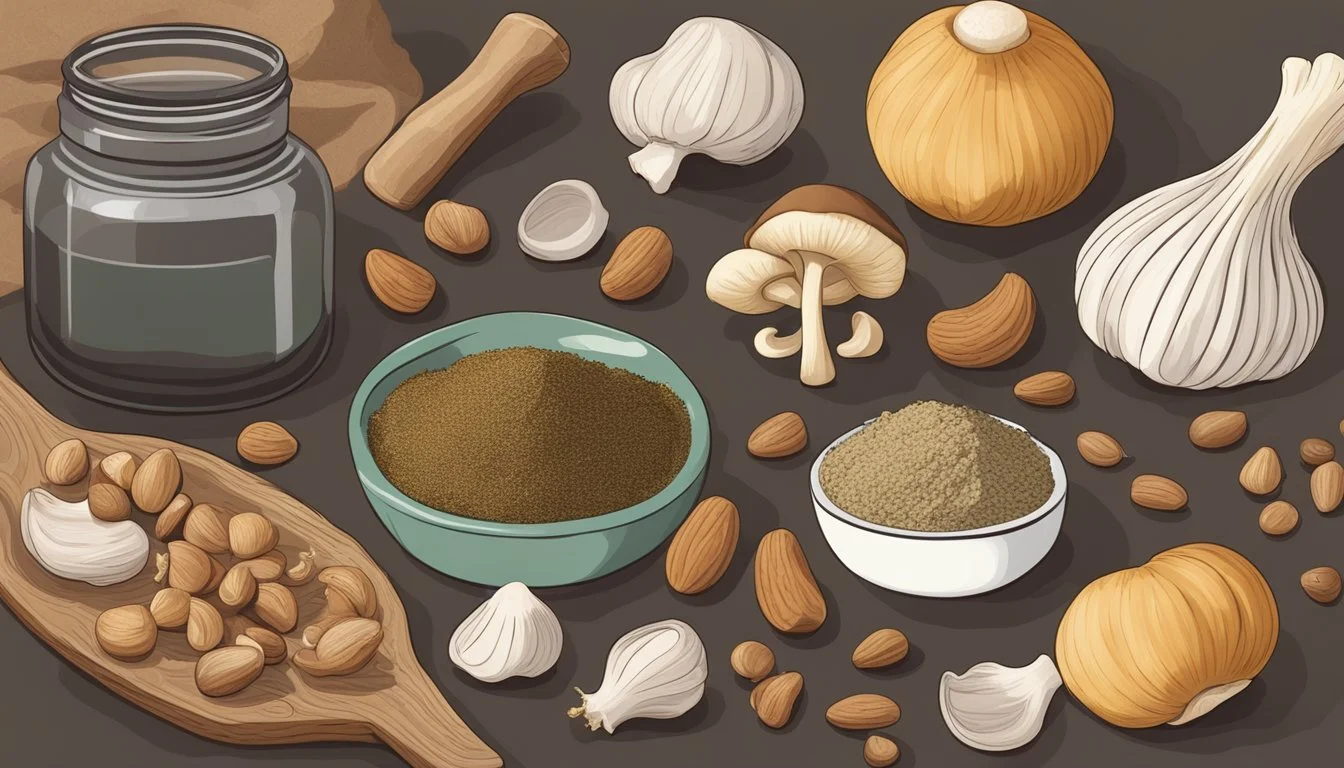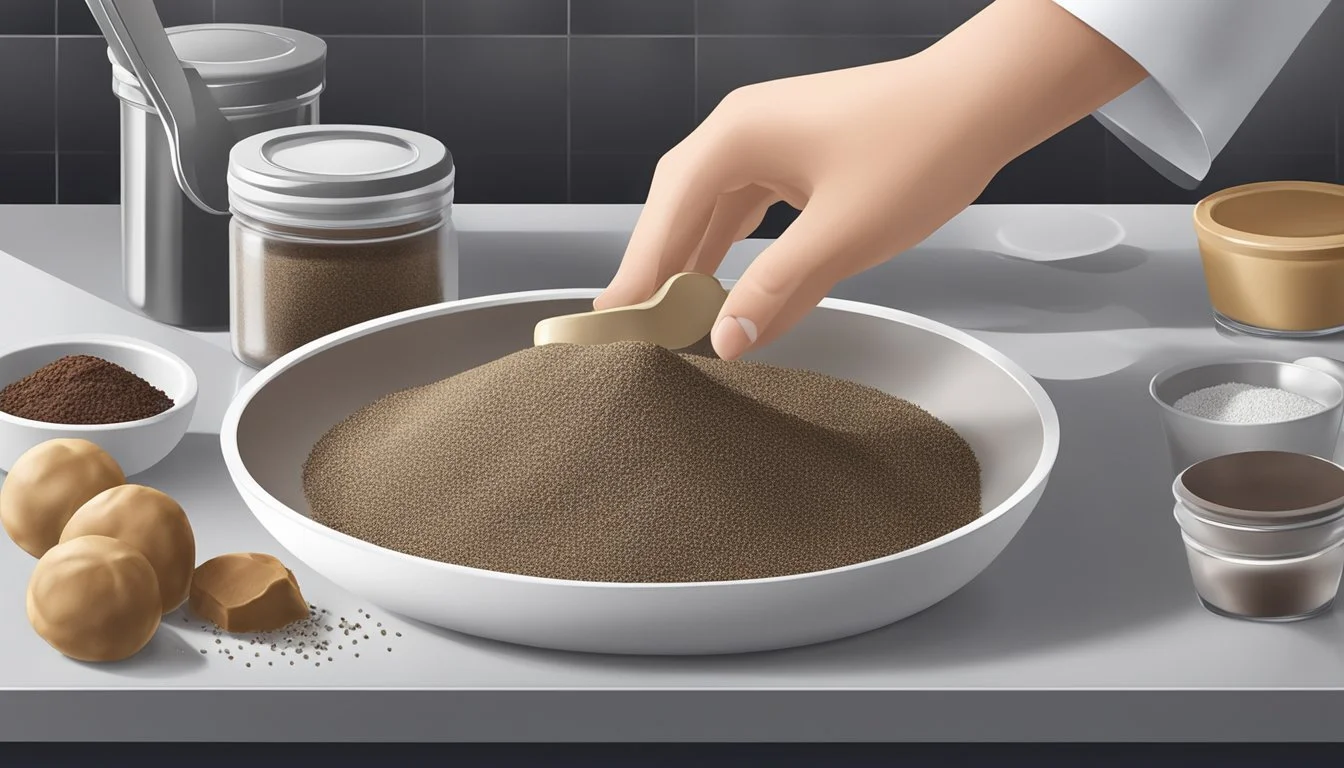Truffle Powder Substitutes
Top Alternatives for Gourmet Cooking
For those searching for a substitute for truffle powder, numerous options offer both affordability and accessibility without sacrificing taste. Porcini mushrooms, often hailed as the "poor man's truffle," can be a cost-effective replacement. They bring a depth of umami that aligns closely with truffles, making them a versatile addition to many dishes.
Another viable substitute includes black trumpet mushrooms. While not identical in flavor, they possess subtle truffle-like qualities, providing a potent and aromatic profile. Balinese truffle salt, containing porcini powder and natural yeast, ensures the enhanced flavor remains intact.
Experimenting with these substitutes could reveal exciting new dimensions in your culinary creations. Whether you’re sprinkling it over pasta, mixing it into sauces, or seasoning roasted vegetables, these alternatives can seamlessly step in where truffle powder leaves off.
Understanding Truffle Powder
Truffle powder is a versatile seasoning made from ground truffles. It captures the distinct essence of both black and white truffles. These fungi, known for their expensive price tags and potent aroma, add a luxurious touch to any dish.
Flavor Profile:
Black Truffle: Earthy and robust, often described as having a deep, musky aroma.
White Truffle: More delicate, with garlicky and slightly peppery notes.
The earthy flavor of truffle powder makes it a favorite in gourmet cooking. It can be used to enhance pasta, risotto, and egg dishes. The powder integrates easily, providing the rich essence of truffles without the high cost.
Truffles, the fungi from which this powder originates, are found primarily in Europe. Black truffles are often sourced from France and Spain, while white truffles predominantly come from Italy. These regions provide the unique soil conditions that give truffles their renowned flavors.
Why Use Truffle Powder?
Cost-effective: Truffles are notoriously expensive. Truffle powder offers a more affordable way to enjoy that earthy truffle flavor.
Ease of use: Unlike fresh truffles, which need to be shaved or sliced, truffle powder can simply be sprinkled over dishes.
Truffle powder provides an accessible entry point to the luxury of truffles, allowing cooks to imbue their meals with the unmistakable essence of these prized fungi.
Fundamentals of Substitutes for Truffle Powder
Substitutes for truffle powder must effectively mimic the distinctive flavor and aroma of real truffles, considering both the core elements of truffle powder and the overall aromatic and flavor profile.
Assessing the Core Elements
When determining appropriate substitutes for truffle powder, evaluating the core elements of truffle seasoning is crucial. The key factors include the intensity of flavor, versatility in use, and quality of the substitute.
Black trumpet mushrooms, known as “the poor man’s truffle,” offer a potent flavor reminiscent of truffles. They are a versatile substitute, albeit with a slightly different profile.
Truffle salt and truffle oil are common alternatives as they retain essential truffle elements. Truffle salt blends fine truffle fragments with salt, while truffle oil is often used as a finishing touch in various dishes, mimicking the luxurious essence of truffles.
Mushroom powders, especially porcini, are viable substitutes that provide an earthy, umami richness, akin to truffle powder. They are more accessible and offer a robust depth of flavor suitable for seasoning.
Understanding Aroma and Flavor
The aroma and flavor profile of truffles is complex and nuanced. Real truffles present a deep, earthy, and musky scent with hints of garlic and nuts.
Truffle-flavored products such as truffle oil and truffle salt are designed to replicate these aromatic qualities. They can enhance dishes with a similar fragrant complexity.
Black trumpet mushrooms are notable for their truffle-like subtleties. Their aromatic profile, while different, can deliver a near-truffle experience.
Porcini powder provides a robust, woody aroma, making it a strong contender. Integrating these substitutes in appropriate quantities can achieve a flavorful and aromatic impact that closely matches truffle powder.
Accurately identifying and incorporating these elements ensures that substitutions maintain the truffle flavor, enhancing the culinary experience.
Popular Substitutes for Truffle Powder
Several alternatives can effectively replicate the unique flavor profile of truffle powder in culinary applications. These substitutes include various truffle oils, mushroom-based options, and specialized seasoning blends.
Truffle Oils and Their Variants
Truffle oils are one of the most direct substitutes for truffle powder. These oils come in two main types: black truffle oil and white truffle oil. Black truffle oil generally offers a more earthy, robust flavor, suitable for hearty dishes like risotto or pasta.
White truffle oil tends to be lighter with garlicky notes, making it ideal for delicate dishes like fish or light cream sauces. Synthetic truffle oils may use aromatic compounds rather than actual truffles, but still deliver a similar flavor. Porcini mushroom oil also serves as a good alternative, adding depth without overpowering the dish.
Mushroom-Based Substitutes
Mushroom-based alternatives mimic the rich, umami quality of truffles. Black trumpet mushrooms, often referred to as "the poor man’s truffle," offer subtle truffle-like undertones. These mushrooms are potent and work well in dishes where truffle flavor is desired.
Porcini mushrooms and their derivatives, like porcini mushroom oil, also deliver an earthy, deep flavor. These substitutes can be used in soups, sauces, and gravies to mimic the truffle powder’s essence. Truffle carpaccio, thinly sliced preserved truffles, is another robust option, providing a more intense, authentic truffle experience.
Salt and Seasoning Blends
Truffle salt is a versatile seasoning blend that combines sea salt with small pieces of dried truffles. This blend can be sprinkled over various dishes, from popcorn to grilled meats, to impart the distinct truffle flavor.
Additionally, olive oil infused with truffle essence can be used as a finishing touch on dishes. These specialty seasonings often contain synthetic truffle flavoring but still achieve a similar taste profile. Salt and seasoning blends are convenient, easy-to-use substitutes that can elevate everyday dishes with a luxurious truffle flavor.
Incorporating Substitutes into Culinary Settings
Truffle powder substitutes can seamlessly enhance various dishes when appropriately integrated. Adjusting recipes and experimenting with new flavor combinations ensures that these alternatives bring out the best in your culinary creations.
Adjusting Recipes
When incorporating truffle powder substitutes, it's essential to consider the unique flavor profile of each alternative. For instance, mushroom powder can be an excellent substitute, providing an earthy, umami taste. Adjust the quantity based on the recipe's requirements to avoid overpowering the dish.
In pasta and risotto, sprinkle the substitute towards the end of cooking. This retains the robust flavor. With soups and sauces, adding the substitute earlier allows the flavors to blend subtly. For scrambled eggs or fries, a light dusting post-cooking can provide the desired taste.
Fat content in the dish should also be considered. Substitutes like mushroom powder work well with butter or olive oil, helping to release their flavors more effectively. Always taste as you go to ensure the seasoning is balanced and complements the other ingredients.
Creating New Flavor Combinations
Experimenting with new flavor combinations can elevate a dish uniquely. Porcini mushroom powder paired with roasted vegetables or steaks can add a rich, depth of flavor. For something different, garlic oil infused with the substitute offers a distinct taste that works well with popcorn or fries.
Combining truffle cheese with pasta or rice dishes can create a creamy, savory experience. For more robust flavors, truffle salt sprinkled over grilled meats or dishes with simple ingredients can be particularly effective.
These substitutes can also enhance vinaigrettes for salads, providing a gourmet twist. The key is to balance the substitute with complementary ingredients, ensuring the dish remains harmonious and flavorful.
Enhancing Dishes with Umami Flavors
Umami, often referred to as the fifth taste, adds a savory depth to any dish. Its unique flavor is both rich and complex.
Sources of Umami:
Common ingredients that provide this flavor include tomatoes, mushrooms, and seaweed. Using porcini salt or truffle powder can intensify the umami character.
Eggs and Fat:
Incorporate eggs for a creamy texture that complements umami. Adding a touch of finishing oil, like truffle oil, can enhance the flavor further. These fats help to carry the umami flavors throughout the dish.
Garlic and Sea Salt:
Garlic is another potent source, adding an aromatic element to the umami profile. A sprinkle of sea salt can bring out the earthy flavors, enhancing the overall taste without overpowering it.
Using Alternatives:
If truffle powder is unavailable, try substituting with tapenade, which contains ingredients like olives and anchovies known for their umami intensity. Sprinkle Parmesan cheese for an added savory punch.
A Table of Common Umami-Enhancing Ingredients:
Ingredient Umami Source Tomatoes Natural umami compounds Mushrooms Glutamate Seaweed Glutamate Porcini Salt Earthy umami Garlic Allium umami Eggs Fat for carrying flavor Truffle Oil Infused umami essence Tapenade Olives and anchovies
By thoughtfully incorporating these ingredients, one can effectively enhance the savory character of any dish, elevating it to new culinary heights.
Healthy Alternatives to Truffle Powder
For those seeking healthy substitutes for truffle powder, two main categories emerge: options low in sodium and nutrient-dense choices. Each offers unique benefits in terms of health and flavor.
Low-Sodium Options
Mushrooms like black trumpet mushrooms are popular substitutes for truffle powder. They have truffle-like undertones and contain minimal sodium, making them a heart-healthy choice. Additionally, nutritional yeast serves as a great low-sodium alternative. It provides a savory flavor similar to truffles without adding much salt content, beneficial for those managing blood pressure.
Other low-sodium options include seaweed flakes. These flakes not only mimic the umami notes of truffles but also come packed with essential minerals such as iodine and potassium. Using such alternatives ensures the flavor profile remains nuanced without compromising health through increased sodium intake.
Nutrient-Dense Choices
Chia seeds can be an innovative replacement. While not mimicking the taste exactly, they provide an accompanying texture and are rich in antioxidants, vitamins, and minerals. These seeds are also high in fiber and low in calories, contributing to better digestive health.
Another nutrient-dense alternative is hemp seeds. These seeds contain high levels of omega-3 fatty acids, protein, and essential vitamins. They offer a nutty flavor that complements many dishes where truffle powder would be used. Their richness in antioxidants further supports overall health without introducing undue calories.
Flaxseeds, ground into a fine powder, also work well. They are packed with lignans and omega-3 fatty acids and provide a subtly earthy flavor. Each of these nutrient-dense choices ensures that dietary needs are met while exploring new and exciting flavor profiles.
Exploring DIY Truffle Substitutes
Creating DIY truffle substitutes involves techniques like home infusions and blending your own seasonings. These methods allow for customization and cost-effective solutions while maintaining the unique flavor profiles related to truffles.
Home Infusions
Home infusions can mimic the complex flavors of truffle oil. Using extra virgin olive oil as a base, one can create infused oils with ingredients like dried porcini mushrooms or garlic.
For instance, combine dried porcini mushrooms with extra virgin olive oil, then let the mixture sit for at least a week to allow the flavors to penetrate. This produces a robust, umami note similar to truffles. Similarly, garlic-infused olive oil can offer another layer of complexity.
A simple recipe might include:
1 cup extra virgin olive oil
1 tablespoon dried porcini mushrooms
2 cloves garlic, smashed
The mixture should be stored in a cool, dark place and shaken occasionally. After infusing, strain the oil to remove the solid ingredients before use.
Blending Your Own Seasonings
Another method involves blending your own seasonings to replicate truffle flavors. Combining spices and dried herbs can achieve a similar effect.
A common blend might include:
1/2 cup sea salt
1 tablespoon dried porcini mushrooms, finely ground
1 tablespoon butter powder (for a rich, creamy flavor)
Mixing these ingredients in a food processor ensures a consistent texture. This seasoning can be sprinkled over dishes like pasta and risotto to elevate their flavor profiles without the high cost of truffles.
Additionally, combining sea salt with finely grated garlic and dried herbs can introduce both garlicky and earthy flavors, mimicking truffle seasoning effectively.
By using these DIY methods, it's possible to bring sophisticated flavors into everyday cooking.
Non-Culinary Usage of Truffle and Its Substitutes
Truffles and their substitutes, such as black trumpet mushrooms, are known for their unique aroma. This aromatic quality makes them useful in various non-culinary contexts.
One common non-culinary use is in the creation of essential oils. These oils can capture the earthy, umami notes characteristic of truffles and mushrooms, providing a rich scent profile for perfumes and home fragrances.
Truffle-infused products are also used in luxury skincare items. Their aromatic compounds may enhance the sensory experience, offering a touch of opulence to creams, serums, and lotions.
In aromatherapy, truffle-scented essential oils are occasionally used to evoke feelings of richness and sophistication.
Table of Non-Culinary Uses:
Application Description Perfumes Earthy, luxurious scent addition Skincare Products Enhances sensory experience Aromatherapy Sophisticated, rich aromatic profile Home Fragrances Unique, umami-infused home scent
These applications highlight the versatility of truffles and their substitutes beyond the kitchen. The umami notes and distinctive aroma can provide a unique addition to various non-culinary products, enhancing their appeal and value.
Sourcing and Selecting Quality Substitutes
When sourcing substitutes for truffle powder, look for ingredients that closely mimic the truffle's distinct flavor.
Fresh Truffles
Fresh truffles, although expensive, offer the most authentic substitute. They provide the rich, aromatic qualities that powders often lack.
Truffle Oils and Truffle Butter
Truffle oils, typically made with an olive oil base infused with real truffle essence, provide a budget-friendly alternative. Truffle butter, infused with truffle shavings, is also a flavorful option.
Mushrooms
Certain mushrooms can mimic truffle flavors. Black trumpet mushrooms, often called the "poor man’s truffle," offer earthy, potent flavors. Porcini mushrooms have a rich and earthy flavor that can substitute for white truffles.
Truffle Salt
This product combines sea salt with small bits of real truffle, making it a versatile and more affordable option. It can be used to finish dishes, giving them a subtle truffle taste.
Geographical Sources
Quality substitutes often come from regions renowned for truffle production, such as Europe and East Asia. The provenance of these products can significantly influence their flavor profile.
Product Form
Consider the form of the substitute. Fresh ingredients usually possess more robust flavors than dried or powdered ones. Using fresh truffles, oils, or butters in their intended state often results in better quality and taste.
Key Attributes for Selection
Authenticity: Ensure the product contains real truffle elements.
Aroma: High-quality substitutes should have a strong, pleasant truffle aroma.
Cost: Balance cost with flavor needs; while some options are cheaper, they may not offer the same depth as others.











